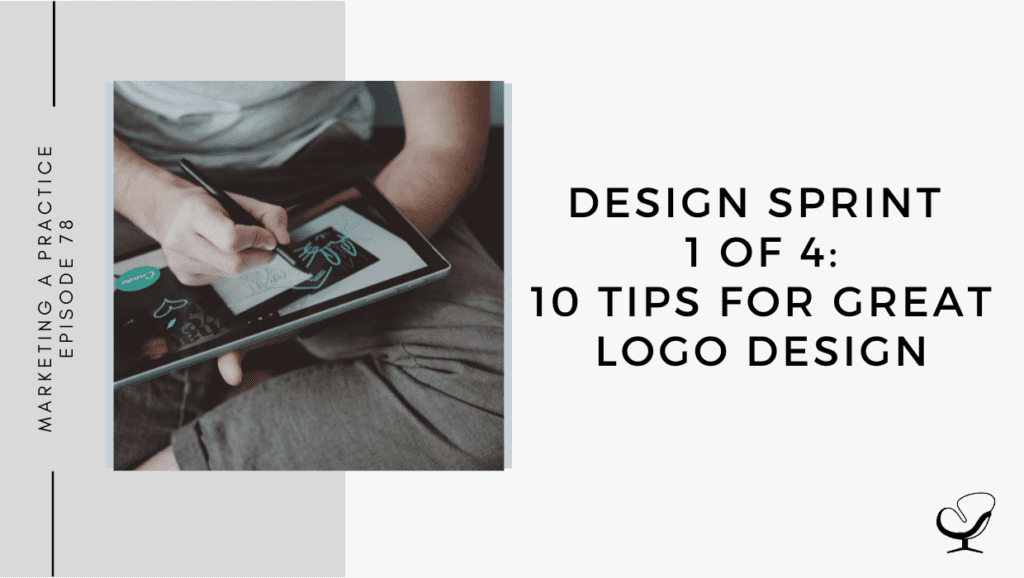1) Know your brand
Before you set out to design your logo, make sure you have insight into your brand. Keep in mind that the logo must reach a particular set of people, which is the target market and target customers. Write down what your business, brand, and market are all about.
You can make use of a brand style guide to encompass the theory (for example, your brand vibe, etc.), as well as the visual side of your branding.
2) A picture paints a thousand words
A logo is a visual representation of your brand, so why tell people what you do if you could just show them?
Use simple – but not clichéd – icons to communicate who you are.
3) Use empty space to keep your logo design clean
Coco Chanel once said, “Before you leave the house, look in the mirror and take one thing off”. The same thing applies to design. Your logo design is only complete once you find you are unable to remove any further elements from it. (Sam Carvalho)
Make sure that people can read your logo from a distance, and even when it is small. Keeping your logo “clean”, with a lot of space, will help to ensure readability.
You do not always need a lot of colors or symbols to create a great logo. Keeping your logo is “clean” will make it a lot easier to integrate your design seamlessly into different layouts and formats.
4) Use shapes to think inside the box
Shapes are a great way to make your logo stand out. Shapes help with cross-platform branding; as a “boxed in” logo works well digitally, or on letterheads, presentations, and merchandise.
If you want to take your design to the next level, shapes with interesting gradients or textures can be used to make your logo stand out even more. Remember tip number three mentioned above – less is more.
5) Color is key for good logo design
Monochromatic does not have to mean black and white. Sometimes, black and white can seem harsh on our eyes, especially if we’re trying to create a calming feeling. Instead, you can use various shades of the same color to create subtle contrasts within your logo.
On the other hand, you can create a standout logo with a pop of color. You could do this by making the first letter of your name a different color, or even the whole word. Adding this small pop of color stops your design from feeling flat.
6) Be literal with your logo
If your name is a thing, make that thing your logo. Do not be afraid to lean into the obvious without falling into clichés. There is a reason that Apple’s logo is an apple.
Working literally does not always mean boring.
7) Be authoritative with your logo
Be literal, but make sure it fits your organization.
Some companies, such as non-profits, demand a level of seriousness that a production company or ice cream shop can get away without.
Ask yourself: if I saw this logo for the first time, would I trust this company? (Sam Carvalho)
Muted colors and serif fonts can help in stopping a logo from feeling too cartoonish.
8) Do not be afraid to rejig the wheel
Pepsi has been around for 120+ years as a brand. However, the modern Pepsi logo we know is drastically different from how it started. Nonetheless, the transformation from then to now was a gradual one.
Pepsi was always building on the brand it had established, and it does not trade its old brand for a new and shiny one.
It’s okay to be bold and try new things. Use patterns, overlapping shapes, and contrasting colors to create a modern logo. However, remember that modernization does not have to be overwhelming to work in your favor.
9) Choose the type of logo
Do you want a logo that has your company’s name as the main feature? This is known as a logotype. Logotypes have your company name available and visible to customers immediately.
Alternatively, you can make use of a combination logo that has both the symbol and company name. Then, should the marketing material warrant it, you could have instances where you just make use of the symbol, instead of including your full logo every time.
10) Make it scalable
Another quality of great logo design is that it is easily scalable. Remember that your logo will feature in a variety of advertisements. It should appear like an impressive logo on all media. (Sam Carvalho)
If the logo loses its sense of proportion and some of its design elements on certain mediums, the logo is badly designed.
This content was originally published here.


